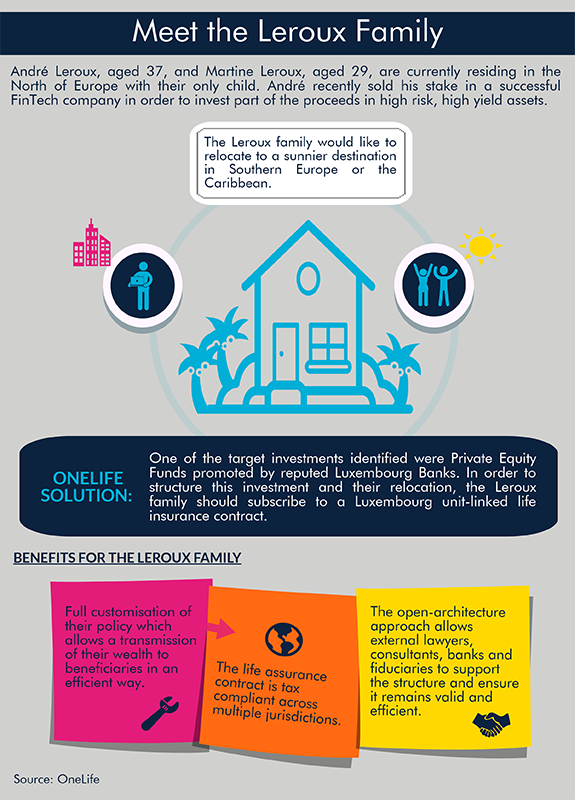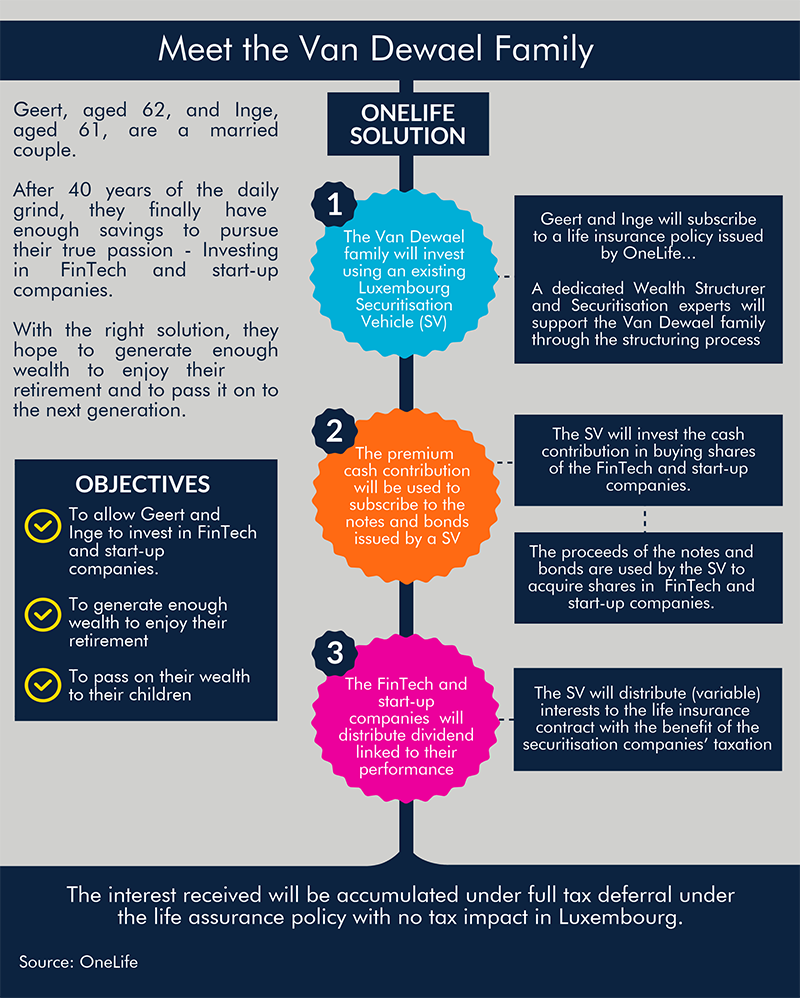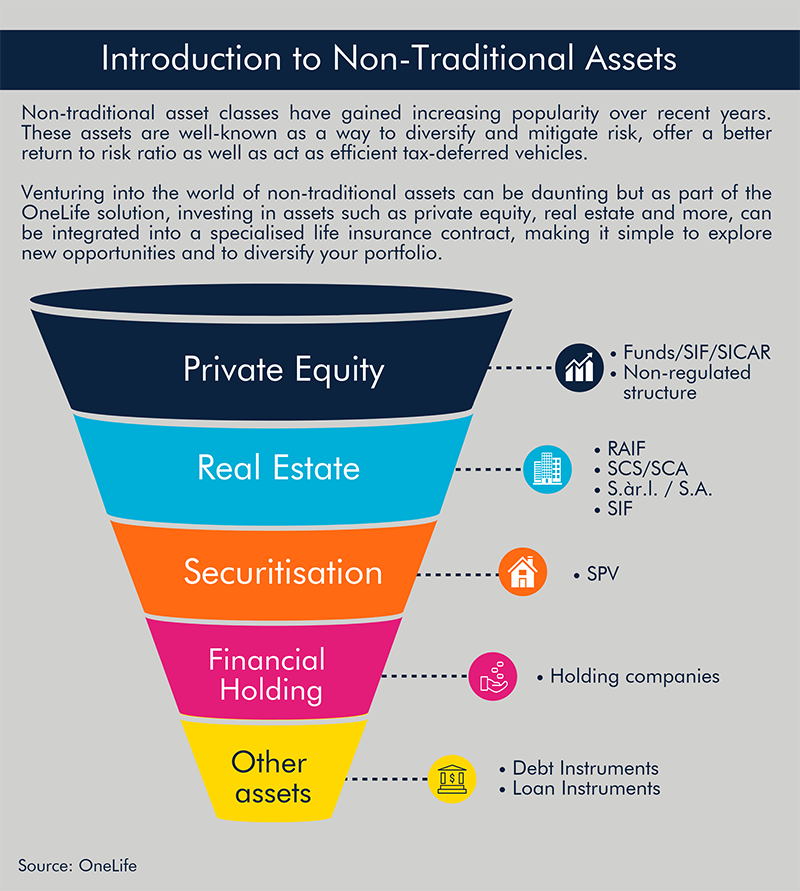Through these two reforms the Belgian legislator has set out to profoundly modernise our civil code. Certain provisions dating back to 1804 were no longer adapted in any way to our current society. Individual liberty, fairness in handing down assets and the (re)composition of new families were at the core of these changes. The life assurance policy, an undeniable and acknowledged asset structuring instrument, could not be left out of these new provisions.

The beneficiary payment is henceforth part of the inheritance
To properly understand the effects of the new inheritance law, we believe it is essential to summarise the way the stipulation works for third parties within the life assurance policy. The policyholder notifies the insurer, using the beneficiary clause, that when the policy is cashed in, the insurance payment will be paid to the beneficiary designated by the policyholder. The policyholder’s stipulation in favour of the beneficiary is done free of charge when it contains no counterparty or obligation in respect of the policyholder in the person of the beneficiary.
The law of 31 July 2017 modified the return rules relating to donations and assimilated the third-party stipulation of a life assurance policy to a donation. Article 188 of the insurance law of 4 April 2014 has been rewritten to correspond to the new civil provisions and, since 1 September 2018, provides “that in the event of the death of the insurance policyholder, the insurance payment is subject to reduction and to return, in accordance with the Civil code”.[1]
The death benefit is henceforth part of the inheritance and enters into consideration in calculating the reserve and available quota. The policyholder may waiver from this return principle by expressly mentioning that the benefit from the insurance policy is granted by “preciput and by dispensing the beneficiary”. When the inheritance is opened, the beneficiary, dispensed of the return, must provide proof thereof.
Having said this, it should always be checked that the donations dispensing with the return remain within the limits of the quota which the deceased party may have at their disposal. Any donation made outside of this available quota opens the personal entitlement to reduction for any reserving claimant. The quota available has been set at half the inheritance and no longer varies depending on the number of children.[2] This provides for greater flexibility of action for those wishing to favour an heir or a third party within the framework of their future inheritance.

From common property to individual property
Even if the reform of matrimonial law appears insignificant in comparison to that undergone by inheritance law, the effects for existing or future life assurance policies are very interesting and are worthy of being detailed within the framework of this contribution.
As a reminder, every insurance policyholder holds a claim in respect of the insurance company to which are associated personal and individual entitlements. The policyholder exercises these entitlements alone if he/she is the sole owner of the policy. On the contrary, the policyholder will exercise these entitlements jointly in the event of a joint ownership with the other policyholder(s) who have taken out the life assurance policy with them. Since the policyholder’s rights are not extinguished on their death, it is necessary to determine the fate of these rights in the event of the prior death of a policyholder which did not terminate the policy. A clause increasing the entitlements between the policyholders may thus provide the desired solution, as may a post-mortem divestment to a said transferee.
To acquire these rights and initiate the policy, the policyholder is obligated to pay a premium, taken from their own assets or which may also come from a community of assets. By the mechanism of the life assurance policy, a premium paid by common funds becomes an undivided claim for joint policyholders or an individual claim in the event of an individual policy having been taken out. Certain civilians have for a long time railed against this situation, supported by the central tax authorities which also refused to acknowledge the life assurance policyholder’s individual rights and thus underlying investment rights.
The reform of matrimonial law has ended this debate by introducing the notion of “ownership and finance” and by definitively clarifying the use of common assets by spouses. In practical terms, a spouse takes out solely or the two spouses jointly take out a life assurance policy with sums originating from the community of assets.
At the death of the first spouse, the existing life assurance policy is not cashed in. The community of assets is dissolved and the surviving spouse is the sole policyholder. The common assets held by the deceased’s heirs incur impairment since the value of redeeming the policy is deducted therefrom. Accordingly, by way of compensation, the surviving spouse must pay a recompense to the community.
In terms of taxation, the positions vary from region to region. In Wallonia and Brussels-Capital, article 16 of the Code of inheritance rights supports the theory of the exemption of inheritance duty on the value of the redemption of the life assurance policy, provided that the spouses have at least one common child or descendant. In the Flemish region, the majority position supports the existence of taxation by virtue of article 2.7.1.0.6 VCF, not at the time of the death of the first spouse but at the partial or total redemption by the surviving spouse.
In conclusion, these two reforms have granted everyone greater liberty in organising their wealth and inheritance situation. In particular, an end has been put to the controversy relating to life assurance policies taken out by spouses married under the regime of community of assets. The door is henceforth open to new possibilities thanks, among other things, to the new inheritance pacts (comprehensive and occasional). The life assurance field will thus continue to change constantly, and Belgian legislation must, in particular, be monitored to preserve mastery of the benefits offered by this great tool.
Do not hesitate to contact us for further information.
Meanwhile, have a look at our #Success in #Succession e-book to discover the multiple benefits of what life assurance can offer as both an effective wealth planning tool and a solution to achieve success in succession.
Authors:
 Nicolas MILOS – Senior Wealth Planner
Nicolas MILOS – Senior Wealth Planner
 Valerie VAES – Senior Wealth Planner
Valerie VAES – Senior Wealth Planner
[1] Article 188 of the insurance law of 4 April 2014, as amended by the law of 31 July 2017 introducing the reform of the inheritance law, M.B. 30 April 2014.
[2] Law of 31 July 2017 modifying the Civil code in relation to inheritances and gifts and modifying various other provisions in this regard, M.B. 1 September 2017 (art. 46 and 47).






















